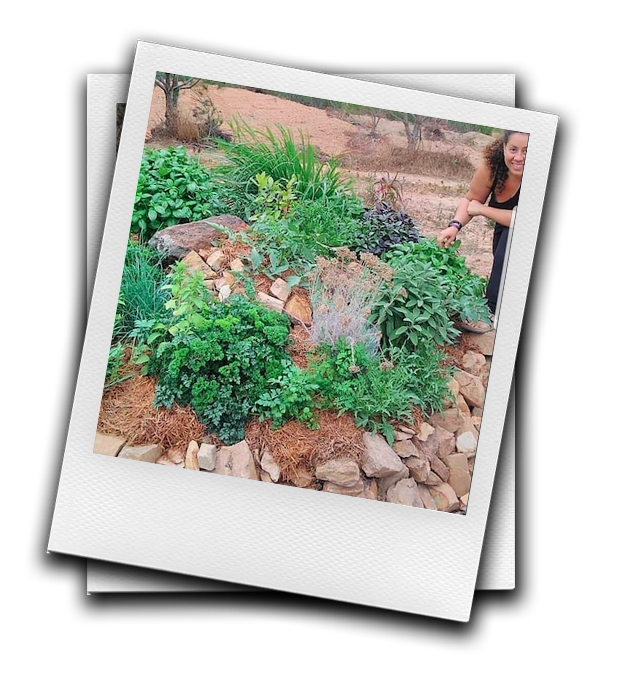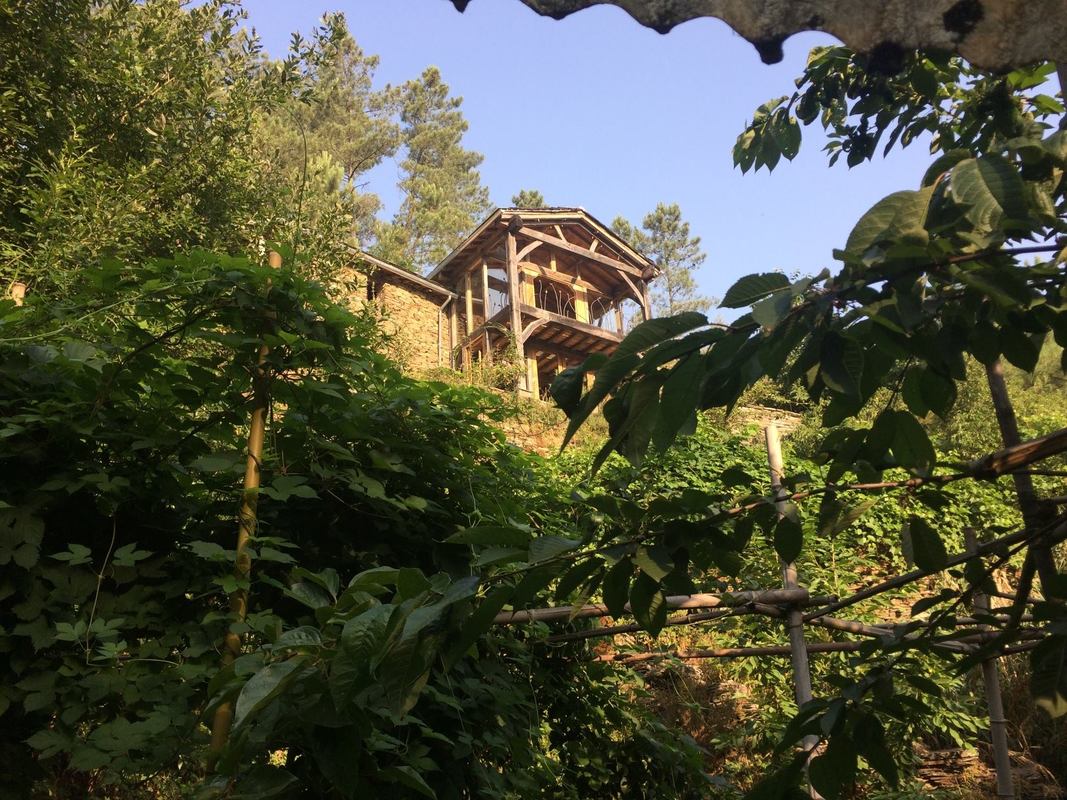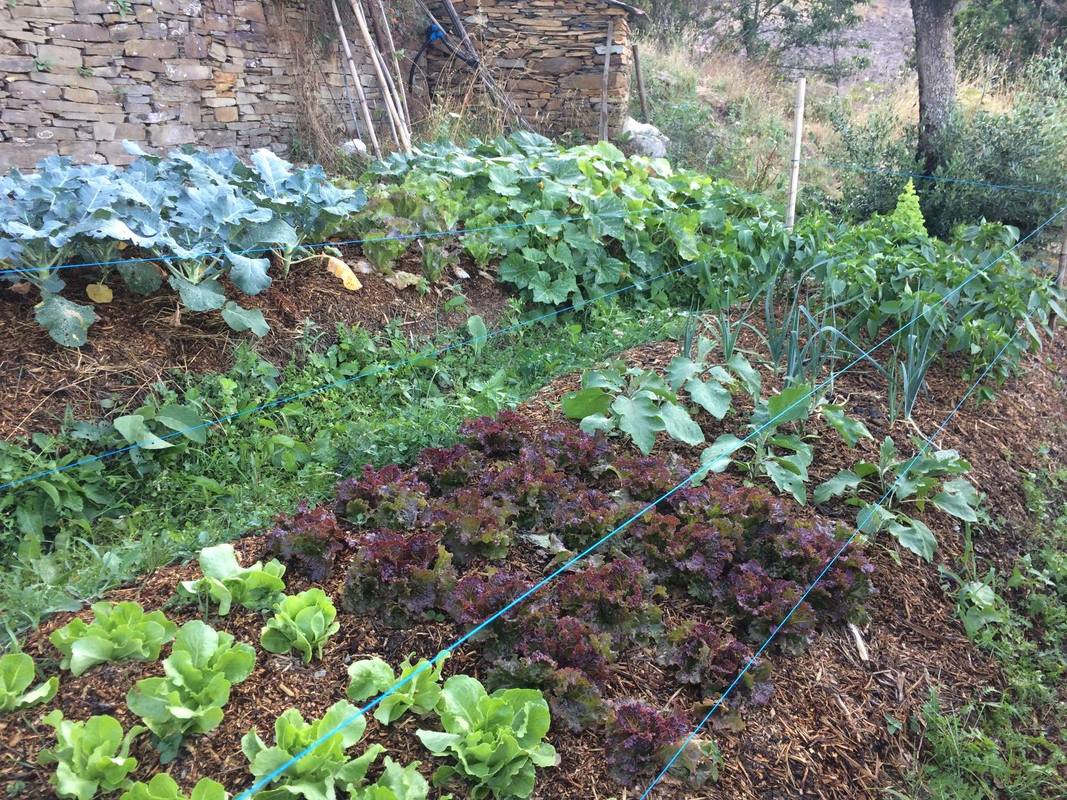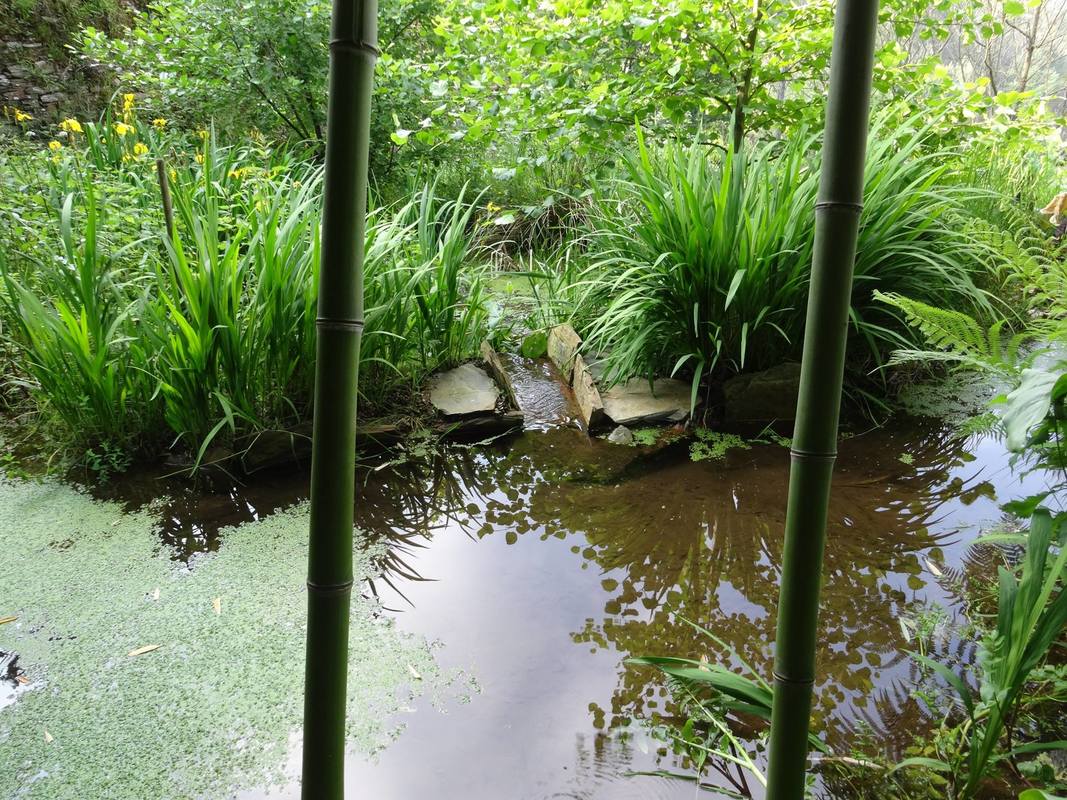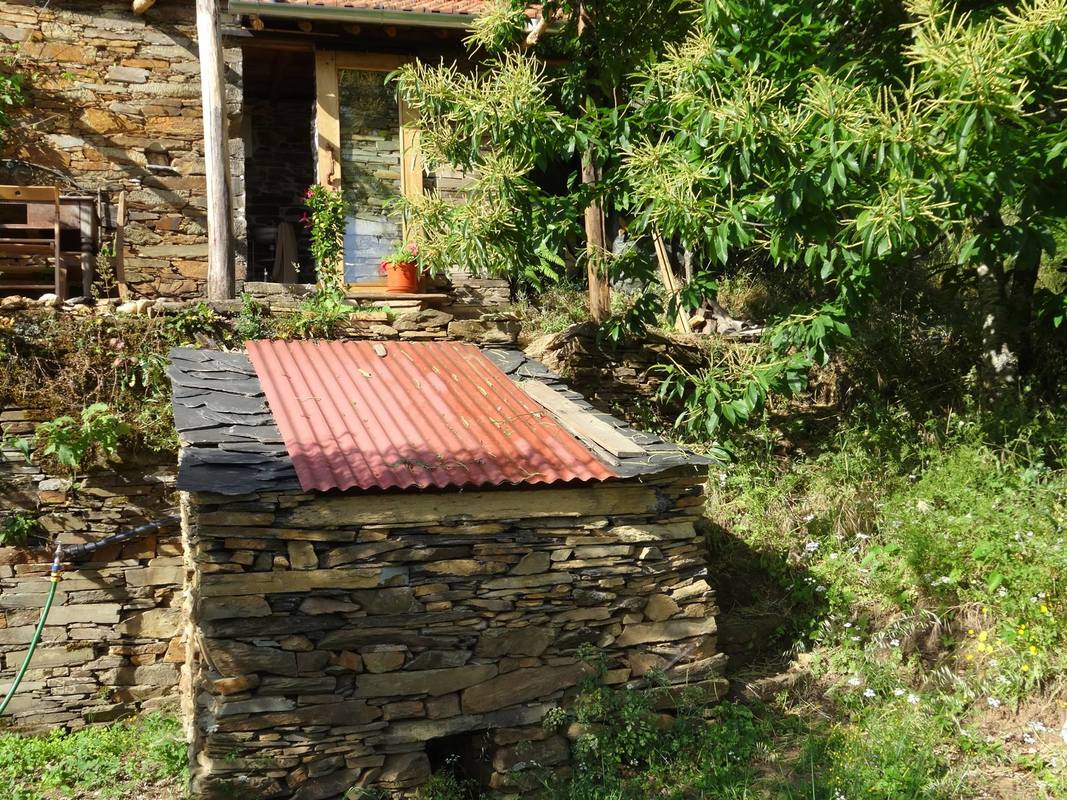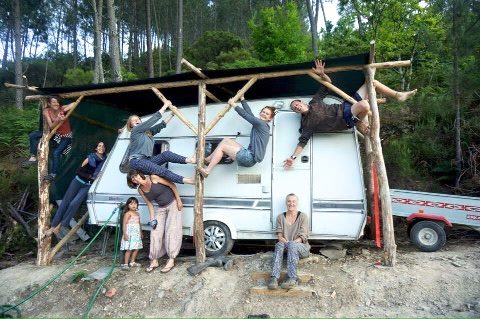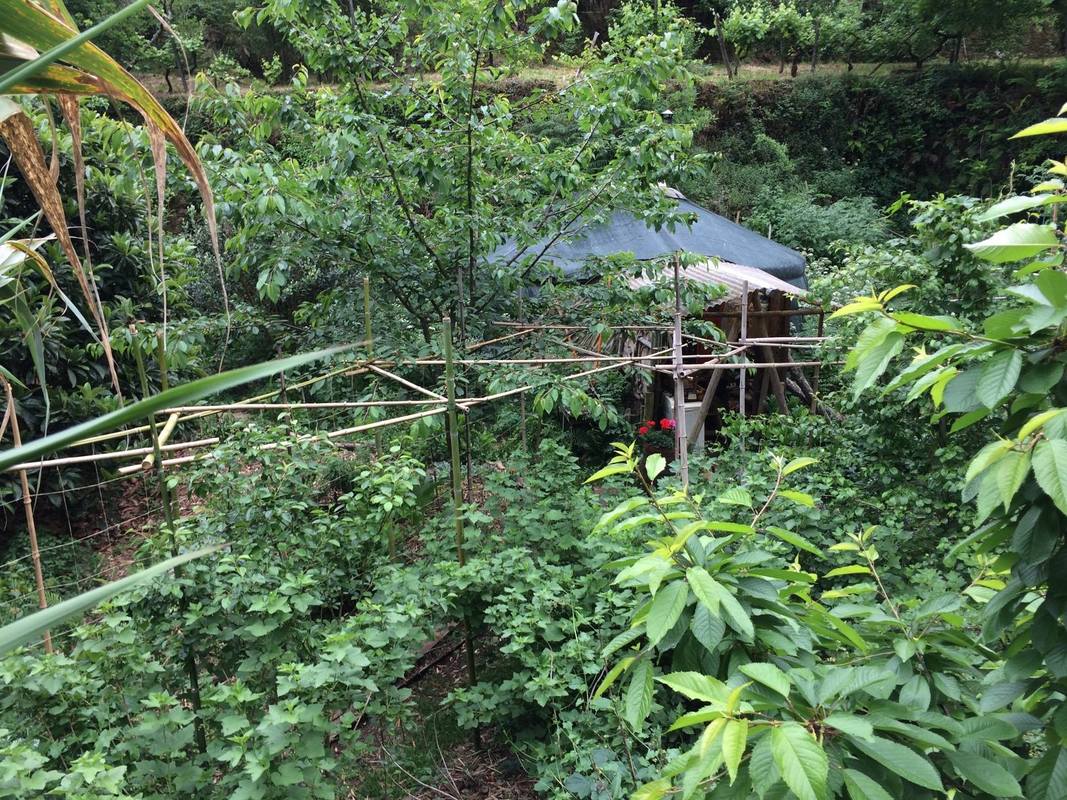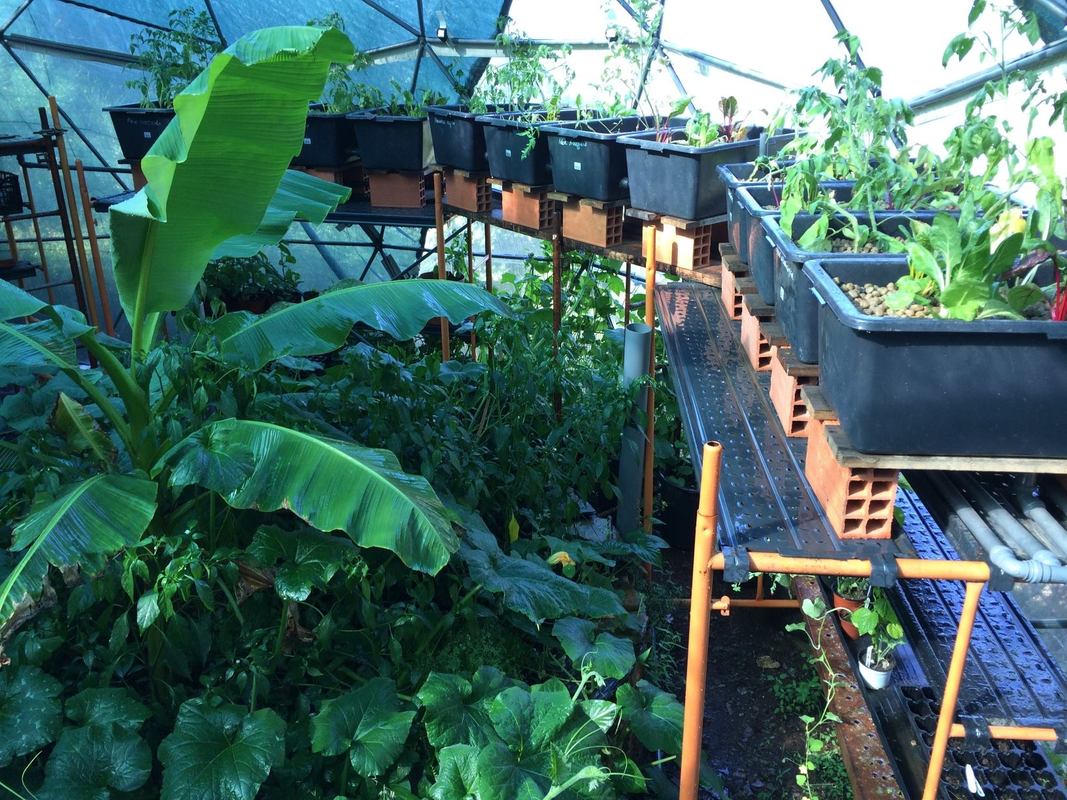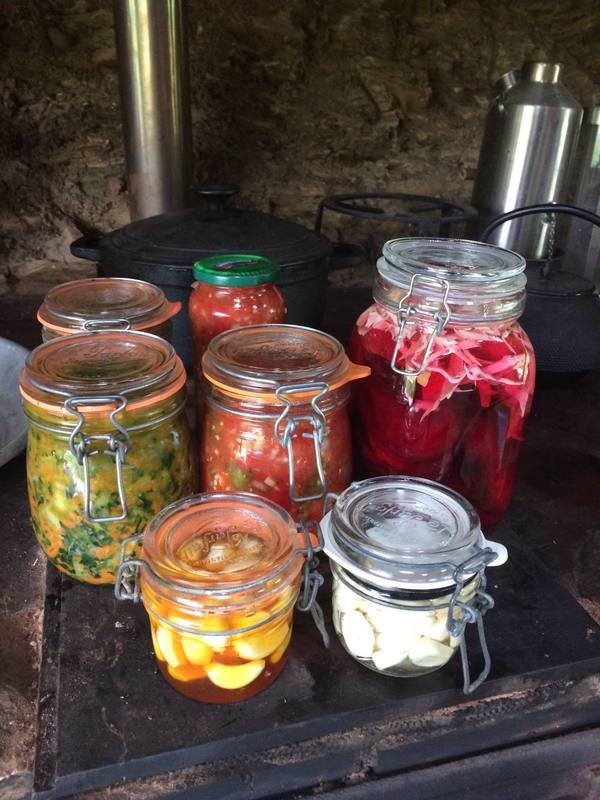
Come join us for an amazing Permaculture Design Certificate Course in Central Portugal, on a stunning site committed to sustainability, featuring countless examples of sustainable living strategies and techniques. Owned and run by Wendy Howard, eco-builder, gardener, biologist, ecologist, activist and pioneer in the region (featured in this natural homes blog).
We are extremely excited to partner with Wendy, who has staged an incredible bounce back following the tragic fires that devastated the region in 2017. This really is a superb opportunity to be immersed in an off-grid permaculture smallholding/ homesteading context with a resilient local sustainability leader.
NOTE – WE ARE ALSO OFFERING A POST-PDC PRACTICAL LED BY WENDY! A GREAT OPPORTUNITY FOR HANDS-ON IMPLEMENTATION FOLLOWING THE DESIGN PROCESS
The Site
Quinta do Vale is in the Serra do Açor, part of Portugal’s principal mountain range. It’s about 75km (45 miles) inland by road from Coimbra, Portugal’s 12th century capital. Its 2-ish hectares (5 acres) of steeply-terraced land lie between 360-420m (1,200-1,400 feet) above sea level. The land is predominantly north-facing, forming a rough S-shape around a northeast-running river valley. It’s sheltered by mountain ridges to the south and west, and to a lesser extent to the north. Slopes vary between 30-45°. The major biome type is warm temperate with climate classified as US Zone 9 and Köppen-Geiger borderline Csa/Csb (warm to hot summer Mediterranean). Annual rainfall averages just over 1000mm..
LOCALITY
This is the “Green Heart of Portugal” – natural parks and forested mountain ranges cut deep by meandering river valleys, peppered with tiny white villages perched on mountain ridges or towns nestling in the valley floors of the larger rivers, and every available square meter of land terraced and richly cultivated with olives, vines, fruit trees and vegetables.
The quinta is within walking distance of the waterfalls of Fraga da Pena and the indigenous forest reserve of Mata da Margaraça, both part of the Paisagem Protegida da Serra do Açor, a nationally protected area within this enclosed valley system. The valleys are surrounded by watersheds in all directions except north. It gives a sense of containment to the area, as well as physical separation from the surrounding landscapes. There are several rare species within the Mata da Margaraça and carefully protected there. These include the largest number of azereiros (Prunus lusitanica ssp. lusitanica) left in Portugal, relicts from the laurel forests of the Tertiary period.
QUINTA DO VALE
Quinta do Vale’s steep terraces are built from dry-stone walls of schist with steps leading up and down from every level. The amount and quality of stonework in this region is stunning. It goes far beyond the simply utilitarian, expressing a centuries-old bond between people and place in its artistry, and enormous sophistication in its engineering.
Terraces are not merely walls holding back soil, but contain underground networks of schist-built irrigation channels, storm drains and water collection and filtration systems. This is integrated water retention engineering for whole valley systems, not merely individual properties. Each terrace follows Keyline principles, gently graded to transport water from valleys out to ridges, and contoured so that water takes the longest possible diagonal route across them before draining off. Built over many generations, this landscape dates back anywhere between 500-1,000 years. Many suspect an Arab influence.
Quinta do Vale’s terraces have olives, nuts and all kinds of fruit. Grapes line every terrace and there’s a little vineyard as well. A small spring-fed mountain stream flows through the middle of the property and the terraces snake their way around it. Part of the water flows in a series of underground schist-built channels, filling collecting pools on each terrace. A schist-built storm drain with steps down its entire length runs parallel to this, carrying the remainder of the water on down the valley.
To complement such complex and sophisticated hydro-engineering, we have added small-scale unlined ponds and swales to slow and infiltrate water to an even greater extent and fast-track the growth of our food forest.
With the resources onsite we are mostly self-sufficient in power (hydro + solar) and heat (solar hot water + enough forest to produce sustainable supplies of firewood while still being able to restore native deciduous species) as well as food and water. We’re not connected to the grid.
We harvest rainwater, use processed grey-water for irrigation, and our ecological sanitation features both dry and flushing compost toilets, the latter a vermicomposting design now approved by our local municipality and open sourced.
The various buildings onsite feature a number of different natural building techniques, both traditional to this area and otherwise.
THE FIRES
This region was part of the 2000 square kilometres decimated in the unprecedented and catastrophic wildfires of October 2017 which cut off these valleys and burned everything in sight, including the quinta. Our entire pine forest burned, we lost several mature deciduous trees and many vines and fruit trees. One schist building was completely gutted, the cob bathroom was damaged and we lost the geodome greenhouse, though the structure survived.
The quinta is still recovering from its wounds and it will be a while yet before we’re back to where we were, but in its current state it presents an excellent opportunity to engage with regenerative design in action, to learn about the principal drivers of climate disruption and to experience first hand its effects.
ACCOMMODATION
& FACILITIES
Thanks to the fires destroying most of our visitor facilities, accommodation is camping on designated pitches. Please bring your own tent and bedding. There is also a comfortable caravan for 2 people (4 at a pinch).
Off-grid electricity is freely available. We have dry and flushing compost toilets and solar heated showers. Laundry facilities are onsite.
Phone and wireless internet signal is reasonable for all networks which can make use of Portugal Telecom’s infrastructure. Vodafone doesn’t get signal here, but you can connect from the village above us. There is free wifi in the nearest village below us, along with a river beach and outdoor café.
Beyond the quinta, there’s a lively international social scene in summer revolving around the river beach, craft cooperative and local cafés. There’s lots of music, local markets, events, workshops, parties and lots of opportunities to meet locals and the sizeable community of eco-immigrants in the area.
“Traditional agriculture was labour intensive, industrial agriculture is energy intensive, and permaculture-designed systems are information and design intensive.”
-David Holmgren
Course Program
The 72 hour Permaculture Design Certificate course at Sunseed follows the curriculum as laid out in Bill Mollison’s Permaculture – A Designer’s Manual. It covers subjects ranging from ethics and principles of permaculture, natural systems, aquaculture, sustainable design methods, patterns in nature, land restoration, water harvesting, grey water recycling, natural building, food forests and guilds, energy conservation, appropriate technology, renewable energy, urban permaculture and invisible structures.
The course teaches how to develop sustainable human settlements, and how to extend and preserve natural systems. The content will be covered between theoretical lectures and practical applications. The courses aim to utilize the collective intelligence of the group with engaging participatory classes.
